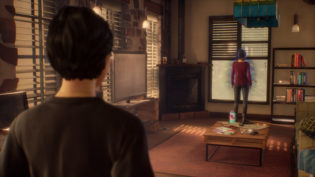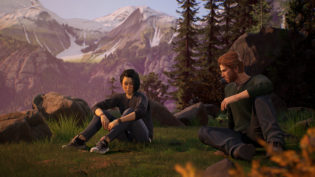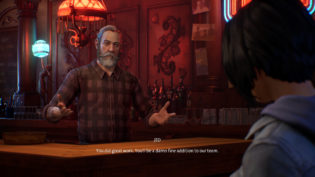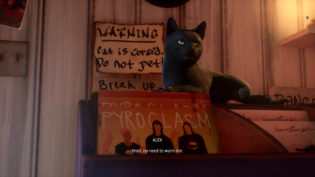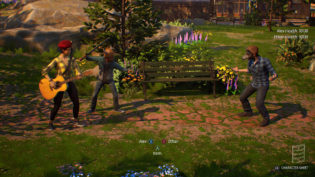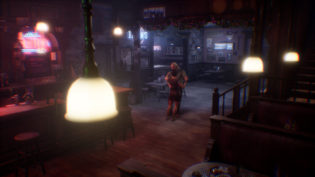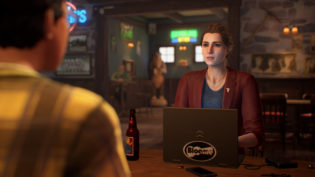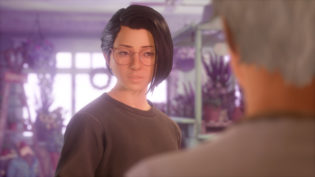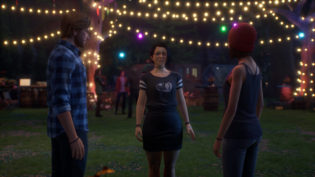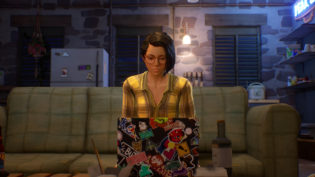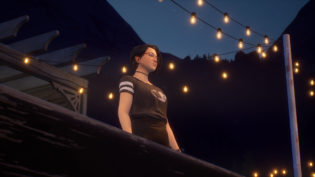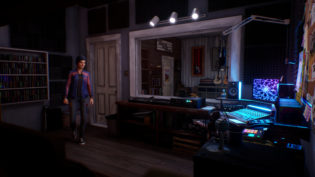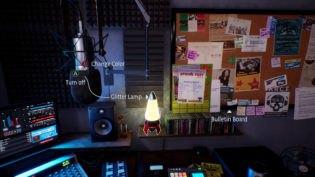I have a weird relationship with the Life is Strange series. I hated the original when I first played it and only after giving it a second chance three years later understood why people liked it. Even so, despite my newfound respect, I didn’t quite love it as much as I wanted to see it evolve and become as good as it could be. Before the Storm was also played late, mostly because of the reception the game got. And yet, I liked it far more and in fact, spoilers, it remains my favorite entry in the series as of now. Then there was Life is Strange 2 which had so many pointless and bizarre decisions and detours in the story that by the end it ended up feeling like a mess. So I was glad that True Colors was going to be handled by Deck Nine, who worked on Before the Storm, and had high hopes for this one. It didn’t quite stick the landing.
Just like before, Life is Strange: True Colors is a story driven adventure game of the type that got popularized by Telltale many years ago. The emphasis is almost exclusively placed on dialogues and decisions, rather than item finding and gathering. And the story is yet again concerned with young adults struggling with some kinds of issues in life but with an element of supernatural mixed in. This time around, the story is about Alex who can read the strong emotions of other people and some items, an ability that could theoretically help her understand other people better and even help them help themselves, yet comes with its own downsides.
What is unlike the previous games and what caught me completely off-guard is that the game is a complete package from the start, no separately released episodes involved this time. I actually didn’t get the game from the start, expecting as usual to just get it when it’s done with all episodes out, until the reviews hit and to my surprise I’ve learned that it’s not how the game got released this time. Theoretically, this is amazing, because the previous titles really suffered from being very clearly designed in episodes and often had very perceptible seams in narrative instead of feeling like a proper cohesive story. True Colors does avoid that, mostly, but it still feels as if it was designed like an episodic game anyway, for some reason. For example, there are still important characters who don’t have any physical presence in later chapters if their presence is based on the player choice, which makes sense when you’re budgeting voice acting episode by episode, but feels out of place in a single game. Also a lot of time skips in narrative don’t feel right because they’re treated as if it’s the end of an episode and the next episode with the time skip will require real life waiting.
But that’s not what the first impressions are like, actually. For the first half of the game, True Colors is really great. The characters are well done, the story develops very naturally and without going too big for its own good. The game tries to keep it simpler and manageable. You spend most of the game in the same locations with the same people and grow to learn more about these places and see them in different context. At many spots the game just opens up and lets you explore, check what other people are doing and occasionally help them in minor but meaningful ways. The characters are likeable, the visuals are beautiful and the music is, as always, nice. I’m not a fan of these soundtracks usually and most of the music selection is a very superficial selection of “nice” tracks and I have to admit that some of the songs selected in this one made me facepalm really hard. But I shouldn’t be too hard on these games, I’m a music snobbish old fart and people like these soundtracks for a reason.
There’s one big thing to criticize, though – the game has a really weak last part. Not as terrible as in the original game, of course, it’s not bad. It’s just poor. It goes for a cheap twist, then for an even cheaper and dumber twist and then, seemingly catering only to those who care about “romances” in these games, completely throws out several hugely important friends of the main character to focus on just one, who can be a romantic interest. Even if they are not a romantic interest and in your story they’re all good friends instead. No really, there are several extremely dramatic moments that should, for all intents and purposes, involve if not all but at least two main side characters, Alex’ best friends, but will only involve one. As does the epilogue, which just ignores the existence of the second friend entirely. It feels as if the last part of the game was just scrambled in the last months of development with far less time and care spent on it than on the previous parts of the game (or maybe it was a late rewrite of some sort).
Despite that, I still loved the journey before the weak ending parts. Life is Strange: True Colors is now my second favorite entry in the series after Before the Storm and despite its many flaws, it’s a great direction for the series to take after the extremely ambitious LiS 2 with it’s road trip theme that simply could never work well. True Colors is a mostly well paced and well told story with likeable characters and I really enjoyed playing it.
And the same goes for the Wavelengths DLC. I wouldn’t be surprised if many people will find it boring, because it “doesn’t give meaningful game world lore” or “doesn’t have any exciting things happen”. Or whatever else. But it does its own little thing – it shows several work days in life of one character over the course of the year leading up to the events of the main game and that’s that. Steph just moved into town and is trying to find her place as a radio DJ. Just like Alex in the main game, she tries to adapt and rebuild herself. It’s just that this way of doing it is less “heroic” and more relatable to most people who’re just trying to find themselves and deal with some crap in their lives. And it also serves as a nice epilogue to the events of the original game from the perspective of people who haven’t been central to that whole plot, but got hurt either way. I liked this Deluxe edition DLC, but your enjoyment will come down to how much you can enjoy very simple slice of life stories.





